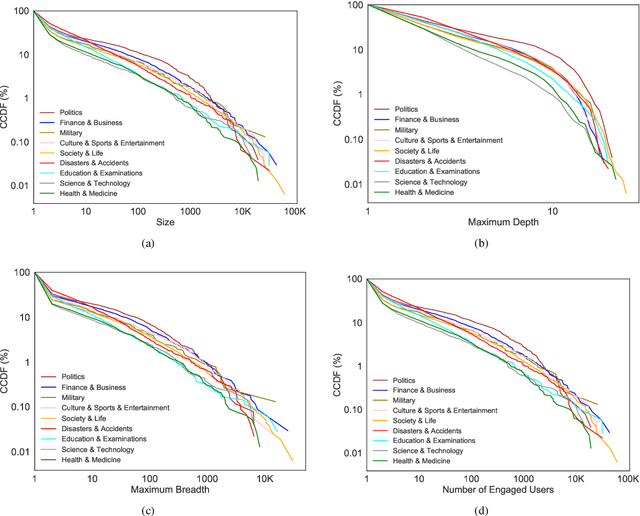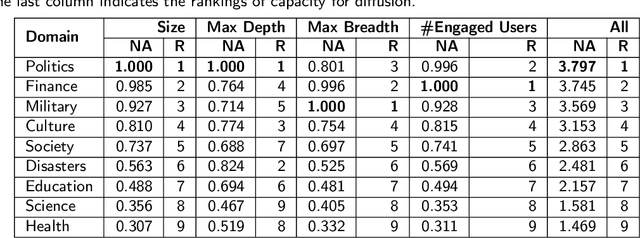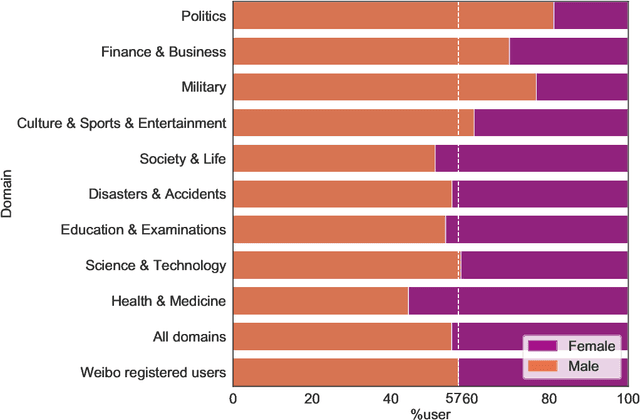Characterizing Multi-Domain False News and Underlying User Effects on Chinese Weibo
Paper and Code
May 06, 2022



False news that spreads on social media has proliferated over the past years and has led to multi-aspect threats in the real world. While there are studies of false news on specific domains (like politics or health care), little work is found comparing false news across domains. In this article, we investigate false news across nine domains on Weibo, the largest Twitter-like social media platform in China, from 2009 to 2019. The newly collected data comprise 44,728 posts in the nine domains, published by 40,215 users, and reposted over 3.4 million times. Based on the distributions and spreads of the multi-domain dataset, we observe that false news in domains that are close to daily life like health and medicine generated more posts but diffused less effectively than those in other domains like politics, and that political false news had the most effective capacity for diffusion. The widely diffused false news posts on Weibo were associated strongly with certain types of users -- by gender, age, etc. Further, these posts provoked strong emotions in the reposts and diffused further with the active engagement of false-news starters. Our findings have the potential to help design false news detection systems in suspicious news discovery, veracity prediction, and display and explanation. The comparison of the findings on Weibo with those of existing work demonstrates nuanced patterns, suggesting the need for more research on data from diverse platforms, countries, or languages to tackle the global issue of false news. The code and new anonymized dataset are available at https://github.com/ICTMCG/Characterizing-Weibo-Multi-Domain-False-News.
 Add to Chrome
Add to Chrome Add to Firefox
Add to Firefox Add to Edge
Add to Edge